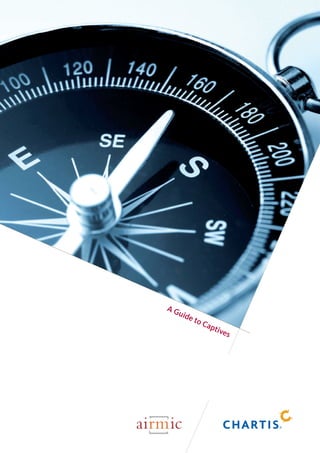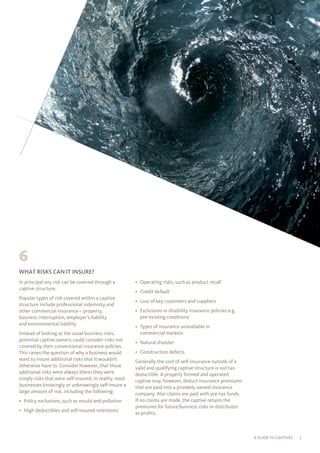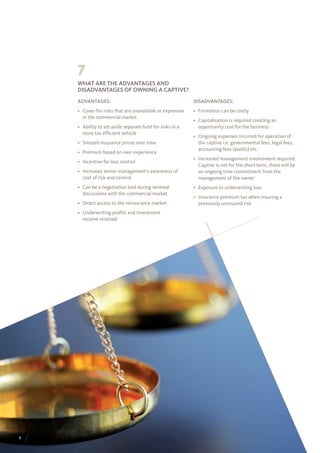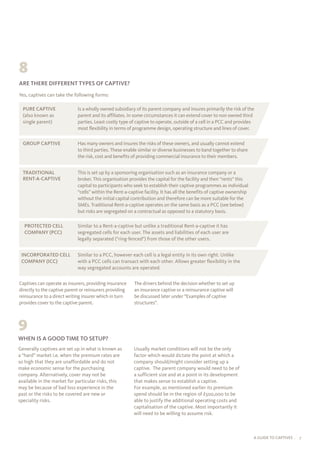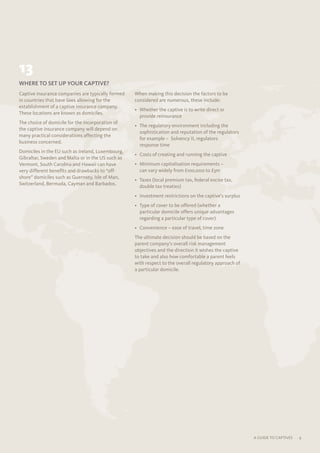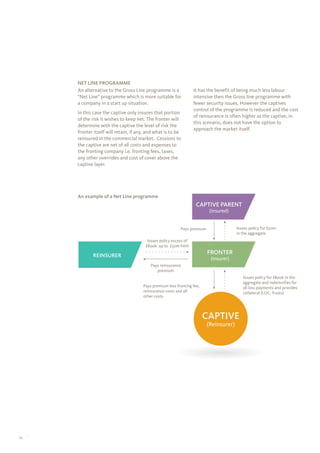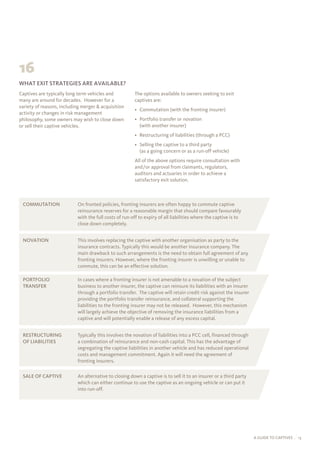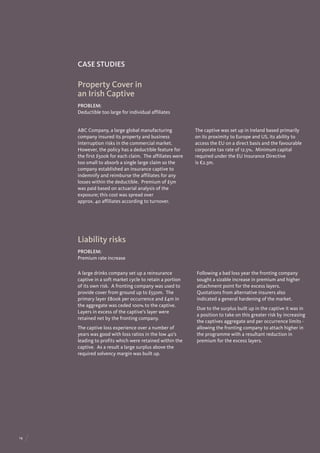The document is a guide produced by Airmic in collaboration with Chartis, offering an overview of captive insurance for its members. It covers key topics such as the definition of captives, their advantages and disadvantages, types of captives, costs involved in setting them up, and when it might be appropriate to establish one. The guide aims to assist organizations in understanding captives and making informed decisions about their insurance management strategies.
